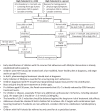Familial Hypercholesterolemia: A Narrative Review on Diagnosis and Management Strategies for Children and Adolescents
- PMID: 33628029
- PMCID: PMC7898200
- DOI: 10.2147/VHRM.S266249
Familial Hypercholesterolemia: A Narrative Review on Diagnosis and Management Strategies for Children and Adolescents
Abstract
Familial hypercholesterolemia (FH) is a relatively common inherited disorder caused by deleterious mutation(s) in the low-density lipoprotein (LDL) receptor or its associated genes. Given its nature as a heritable disease, any useful screening scheme, including universal, and cascade screening, allows for the early identification of patients with FH. Another important aspect to note is that early diagnosis associated with appropriate treatment can promote better prognosis. However, most clinical diagnostic criteria for adults have adopted clinical elements, such as physical xanthomas and family history, both of which are usually obscure and/or difficult to obtain in children and adolescents. Moreover, LDL cholesterol levels fluctuating considerably during adolescence, hindering the timely diagnosis of FH. In addition, recent advancements in human genetics have revealed several types of FH, including conventional monogenic FH, polygenic FH caused by common single nucleotide variations (SNV) accumulation associated with elevated LDL cholesterol, and oligogenic FH with multiple deleterious genetic variations leading to substantially elevated LDL cholesterol. The aforementioned findings collectively suggest the need for amassing information related to genetics and imaging, in addition to classical clinical elements, for the accurate diagnosis of FH in this era of personalized medicine. The current narrative review summarizes the current status of the clinical and genetic diagnosis of FH in children and adolescents, as well as provide useful management strategies for FH in children and adolescents based on currently available clinical evidence.
Keywords: adolescents; cardiovascular disease; children; familial hypercholesterolemia; statin.
© 2021 Tada et al.
Conflict of interest statement
The authors report no conflicts of interest in this work.
Figures


References
-
- Friedman M. Pathogenesis of the spontaneous atherosclerotic plaque. A study on the A/Friedman M: pathogenesis of the spontaneous atherosclerotic plaque. A study on the cholesterol-fed rabbit. Arch Pathol. 1963;76:318–329. - PubMed
Publication types
MeSH terms
Substances
LinkOut - more resources
Full Text Sources
Other Literature Sources
Medical
Miscellaneous

